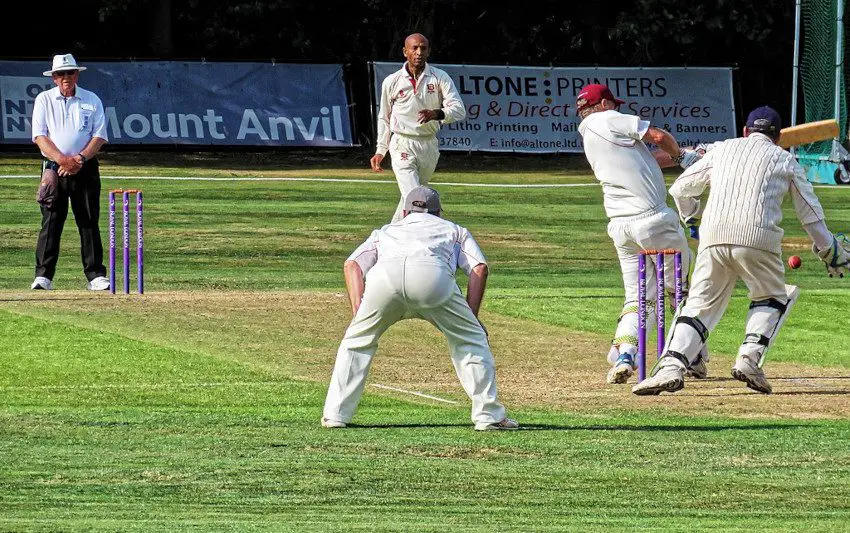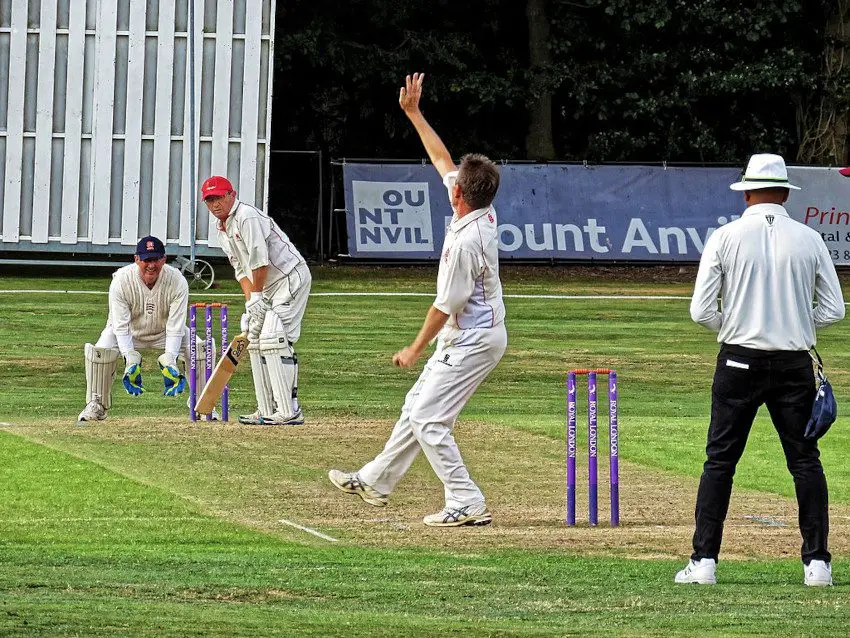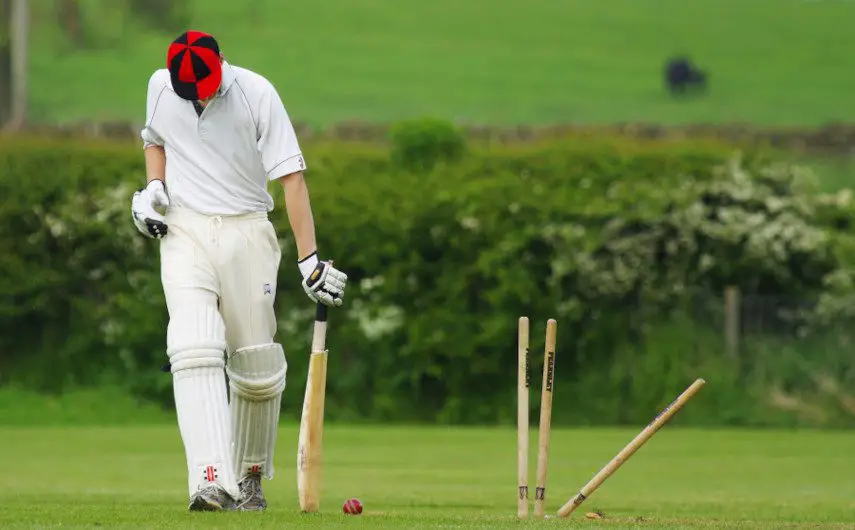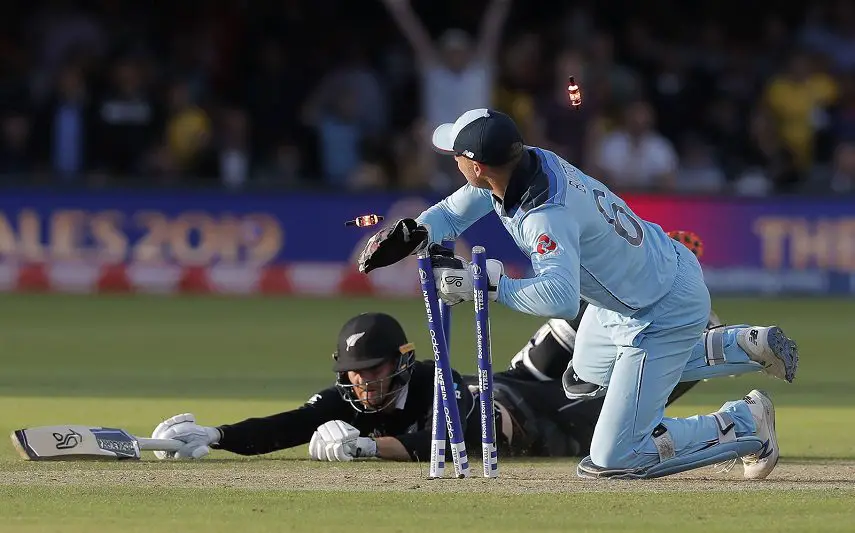Table of Contents
Anyone new to cricket needs to start with the basics and this article is going to discuss the term ‘over’ with the meaning and significance that is attached to it.
What is an Over in Cricket?
In the present day, an over in cricket consists of six legitimate deliveries. At the end of the sequence of six balls, ‘over’ is called and a new bowler starts a new over from the opposite end.
If there are any illegal deliveries, such as no balls or wides, they will not be counted as one of those six balls. It doesn’t matter how many of those wides or no balls are sent down, and the over will only end when six legal deliveries have been sent down.
The Course of an Over
This is how an Over develops during a game of cricket.
- The umpire, batsmen, bowler and fielders get into position
- The over is considered to have begun when the bowler starts their run up
- Six legal balls are then delivered
- When the sixth ball of the over is considered to be ‘dead’, the umpire shall call ‘Over’
- The next over will commence from the opposite end
If there are wides or no balls in the over, these will not count as legitimate deliveries. Only legal deliveries will count towards those six balls, and the bowler must send the ball down again if a wide or no ball is called.
There is, therefore, scope for seven balls, eight balls, nine balls or more but because only legitimate deliveries will count, an over is considered to consist of six balls only.
Law 17 in cricket’s rule book covers all of the aspects relating to an Over. In this part, various subsections discuss the amount of balls, how an over is constructed, and what the umpires and scorers need to do in the event of illegal deliveries.
In this section, the rule book and the MCC official website go on to state what happens in the event of an umpire miscounting and when a ball is considered to be ‘dead’. My article here explains all you need to know about overs in a concise manner, while Law 17 will list every single ruling in full.

Number of Overs in Different Formats
There are three distinct formats of the game that are played globally:
- First Class Cricket,
- One Day Cricket,
- and Twenty20.
In First Class Cricket, which also covers Test Matches, there are no restrictions on the amount of overs that can be bowled. These are timed games with first class fixtures generally taking four days while most test matches require five days.
Within each day’s play, the bowling team must deliver a minimum number of overs, but there is no maximum limit.
In One Day Cricket, the two innings are restricted to a maximum of 50 Overs a side. This applies to One Day Internationals and any 50-Over domestic competitions which are in place.
In T20 cricket, each side receives a maximum of 20 Overs each. Once again, this applies to international and domestic T20 games. It’s also important to note the restrictions relating to the maximum number of overs that a bowler can bowl.
In test and first class cricket, there are no such restrictions, but in ODI and T20 games, there are limits. These will generally be 20% of the total allocation. Therefore, in a 50-Over a side match, bowlers can deliver a maximum of 10 Overs each. In T20 cricket, that limit is reduced to four overs per bowler. If rain affects the game and the number of overs has to be reduced, the calculations will change, but that 20% rule will apply. So, for example, if rain restricts a T20 match to ten overs per side, each bowler will be able to deliver a maximum of just two overs.
In some parts of the world, T10 cricket is played while England now has a 100-Ball competition known as the Hundred. The Hundred doesn’t actually have overs and the series of deliveries are known as ‘sets’, but because those formats have yet to be played globally, the main focus is on the three established forms.
Historical Number of Deliveries in an Over
The laws of cricket now state that Overs should contain six legitimate deliveries, but this hasn’t always been the case. Throughout the history of the game, countries have applied their own rules, and different numbers of deliveries had previously been used to define an over.
Throughout the majority of the 1800s, matches in England consisted of four-ball overs. This was increased to five in 1889, six in 1900, and eight in 1939. English cricket went back to six-ball overs in 1945.
Over in Australia, I can remember eight ball overs being used for some time. The first Ashes series that I watched was England’s 1974/75 tour, and eight ball overs were in place at that point. In fact, those eight ball overs were employed in Australia for much of the 1970s. This must have put an extra strain on the bowlers, and it would likely have been difficult for the England tourists to adapt and to concentrate for the full eight balls.
In the subcontinent where draining conditions took their toll on the bowlers, shorter overs were employed in countries such as India, Pakistan and Sri Lanka.
As cricket’s popularity began to grow across the world, the lack of uniformity led to a confusing landscape. It was difficult for some of the bowlers too: Those who were used to sending down six-ball overs might find themselves touring Australia where extra stamina was required to deliver those additional two balls. It was time to bring all countries into line.
When Did Cricket Go to Six Ball Overs?
Finally, the laws were changed ahead of the 1978/79 season. The International Cricket Council (ICC), decreed that right across all forms of the professional game, six ball overs should be employed.
With some countries using four deliveries per over and others using eight, it seems that six was a good compromise and if you think about it, it’s a logical decision. Four is too short, while eight seems too long, so six must be about right.
Related Terms
Six ball overs look set to stay, and it’s unlikely that the situation will change in the future. The law has been established for almost fifty years now, and everyone seems happy, so there’s no reason why things should be changed. Meanwhile, across the history of cricket, other terms have cropped up relating to overs, and it’s useful to understand them.
Super Over
A Super Over is a new introduction to the game, and it’s used to decide a winner in a limited overs match. In games where the Super Over is employed, it will come into play when the game ends in a tie. A single bowler sends down six deliveries to the batters. The batting side have two wickets intact, and the team with the most runs at the end of the Super Over wins the game.
Maiden Over
A Maiden Over occurs when a bowler sends down six deliveries, and no runs are scored. Any batting extras such as byes or leg byes are not debited to the bowler’s figures, but no balls and wides are counted.
Wicket Maiden Over
If no runs are scored and a wicket is taken which is credited to the bowler, this is classed as a Wicket Maiden.
Two wickets in that Over would be called a Double Wicket Maiden – three would be triple, and so on.
Perfect Over
A perfect over would see a bowler take six wickets with each legitimate delivery. It’s yet to happen in any form of the professional game, although there have been a number of cases where players have taken four wickets in four balls.
Death Over
A death over, as the name suggests, is delivered towards the end of an innings. It specifically relates to limited overs forms of cricket, and you’ll hear commentators use the term in both T20 and ODis.
There is no specified point when the death overs start: In one day, 50-Overs a side matches, the term will generally be used when there are ten overs left to bowl. In a T20 game, the death overs may commence from the start of the 16th over.
The rise of the term has led to the phrase ‘Death Over Bowlers’ or Death Bowlers. This is the point in the match when batsmen are looking to score quick runs in order to boost their team’s total. Bowlers will then start to use all of their skills, such as yorkers, slower ball bouncers, and other variations, in an attempt to stem that run flow.

Powerplay Overs
The Powerplay is a term used in limited overs cricket to describe a passage of play when fielding restrictions apply. These overs will usually appear at the start of an innings, but there are occasions when additional powerplays are employed later on.
For example, at the beginning of a T20 match, the first six overs are considered to be the Powerplay and this is a point when the fielding side are only allowed to have two fielders outside of the 30 yard circle. At the end of that sequence, those restrictions are relaxed.
Any over bowled during that initial phase of the game forms part of the Powerplay Overs. There have been some additions to this rule and there can be some changes, depending on the competition. For example, in Australia’s Big Bash League, batting teams can call a second powerplay of two overs later on in the innings. Those fielding restrictions will come back in and it will leave some gaps in the field for the batters to take advantage of.
Last 20 Overs
In first class games, when the last hour of play is reached, teams enter into a final phase of the match. During this phase, the fielding team must bowl a minimum of 20 overs with a view to achieving a result. If there is time, they can bowl more than 20 overs in that final hour.
If, at any stage, the two captains agree that a result is unlikely, they can shake hands, end this 20 Over phase early and the match will have ended in a draw.
All of these terms are based around the concept of an over. They have become part of cricket’s wide dictionary, and each is important in its own right. It’s useful to understand what each of them means, while they are all tied in to the fact that, in the present day, an over in cricket consists of six legitimate deliveries.


